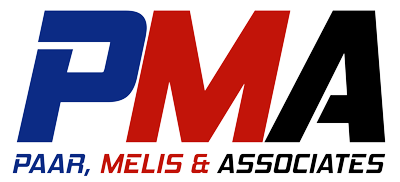When running an auto repair shop, financial decisions like leasing versus buying vehicles and equipment can significantly impact your bottom line. As Hunt Demarest, CPA, explains in the latest episode of Business by the Numbers, choosing between the two depends on several factors, including tax advantages, cash flow needs, and long-term business goals. Here’s everything you need to know.
Leasing vs. Buying: Key Differences
Leasing offers flexibility with lower upfront costs, predictable monthly payments, and the ability to upgrade to new equipment or vehicles more frequently. However, leasing often results in higher total expenses over time and lacks ownership benefits.
Buying, whether outright or financed, involves a larger initial cost but can result in significant tax advantages, such as depreciation deductions. Ownership also allows you to build equity in the asset, and for some purchases, like heavy vehicles, the upfront tax benefits are hard to ignore.
Tax Implications You Need to Know
For vehicles, gross vehicle weight is a game-changer. If a vehicle weighs more than 6,000 pounds (like the Mercedes GLA 300), you can deduct the entire cost in taxes during the first year if you purchase it. Vehicles under 6,000 pounds have stricter limitations, capping deductions at $18,000 in the first year, with the remaining cost depreciated over five years.
For equipment, leases are often structured as “lease-to-own,” meaning they are treated like loans for tax purposes. This allows auto shop owners to deduct the full cost of equipment, such as alignment racks, in the first year.
Real-Life Example: Making the Right Choice
In the podcast, Hunt shared an example of a client torn between leasing or buying a Mercedes GLA 300 for personal use. Initially, the tax benefits of leasing seemed appealing, but after learning the vehicle exceeded the 6,000-pound threshold, buying became the better choice. Why? The client could deduct the entire purchase cost upfront, leading to a much larger tax savings than leasing.
Similarly, a client looking to buy a $68,000 BMW discovered financing through the dealership saved them $3,000 compared to paying cash, thanks to financing incentives. These small decisions can lead to big savings if you know what to look for.
Equipment Leasing: Why It’s So Common
In the automotive industry, leasing dominates equipment purchases. Why? Leases are fast and convenient, allowing shop owners to acquire equipment without waiting for lengthy bank approval processes. However, banks often offer lower interest rates, making their loans the more cost-effective option over time.
When deciding between a lease and a loan, compare the total cost, including interest and fees. While leases might seem more expensive, their speed and simplicity often make them the preferred option for busy shop owners.
What This Means for Your Business
- Vehicles: Heavier vehicles often favor buying for the upfront tax deduction. Lighter vehicles may lean toward leasing for cash flow benefits.
- Equipment: Leasing is more common, but loans often save money in the long term. Compare costs and interest rates to make the best decision.
Pro Tip: Always explore multiple financing options. Whether you’re buying or leasing, having more choices helps you negotiate better terms and avoid unnecessary expenses.
Conclusion
At the end of the day, the decision to lease or buy depends on your tax situation, cash flow, and business goals. Make sure to consult with your accountant before making any major financial commitments to ensure you’re maximizing savings and making the right choice for your shop.

